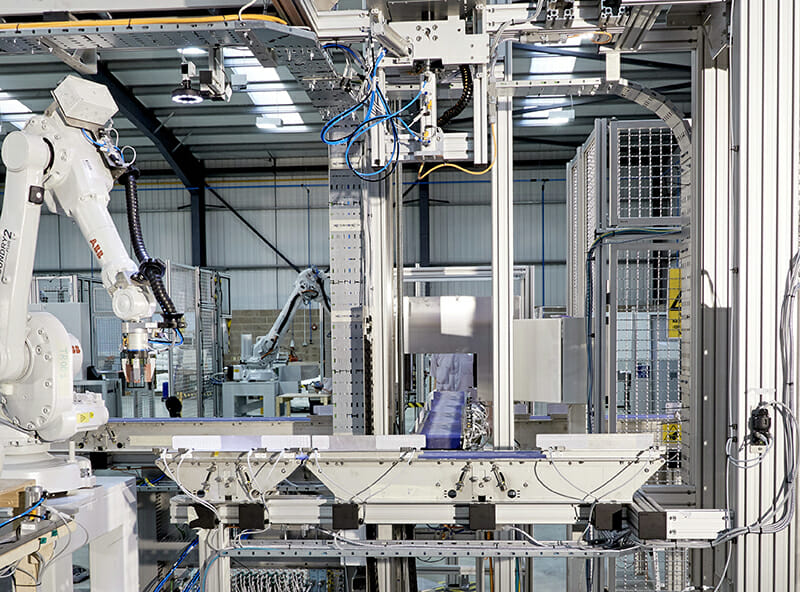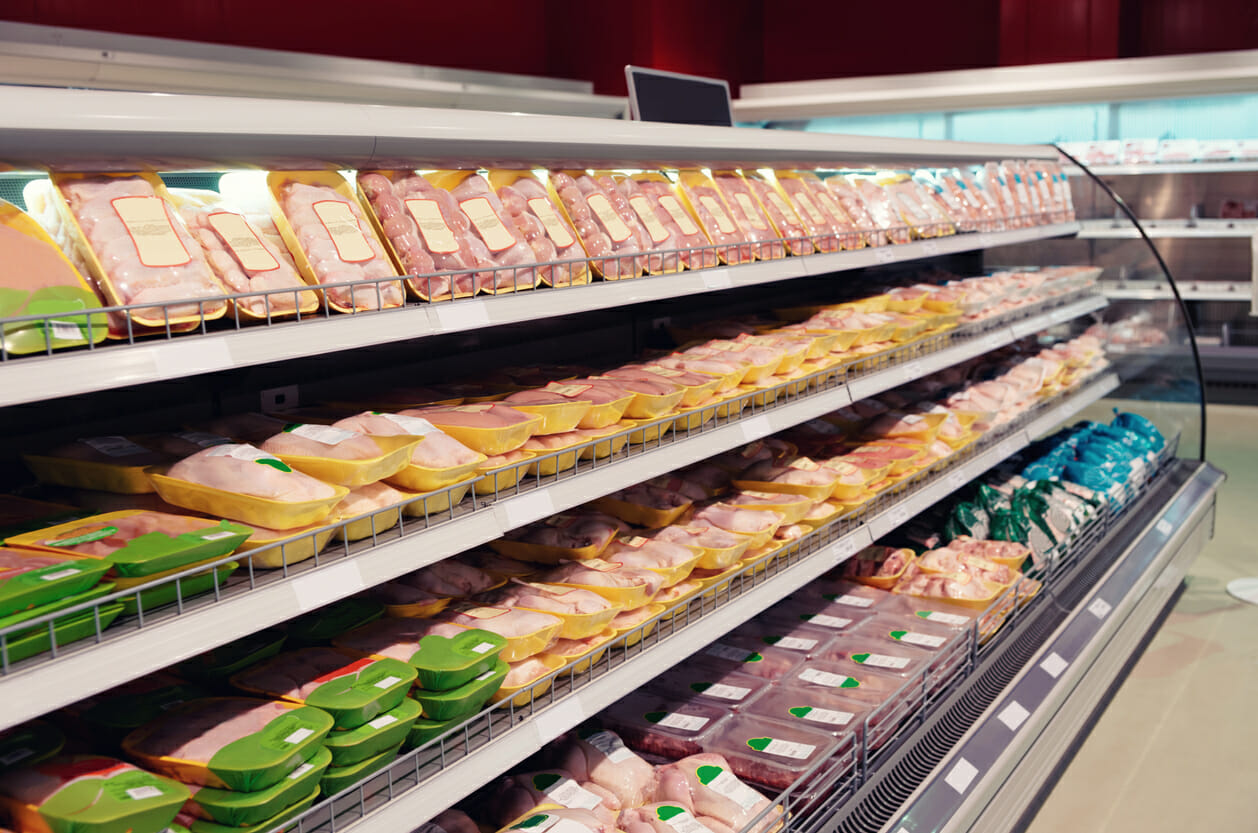The relationship between UK manufacturing and the uptake of robotics and automation remains an ongoing and sometimes sensitive topic for discussion. Whilst there are many manufacturers who readily embrace the opportunities that automation can bring, there are others, especially those producing traditional hand crafted items, who feel they must reconcile the benefits of technology, with what may be a heritage spanning many decades and any potential impact on their brand.
The introduction of 4 automated production cells by Wade Ceramics clearly demonstrates the concept of combining technology with traditional manufacturing processes to deliver increased output, improved quality and consistency. Designed and manufactured by Wood Automation & Control’s Systems Division, the automated cells not only deliver the anticipated results, but also reinforce the meticulous standards for which Wade have become renowned.
As one of a number of thriving ceramics companies in Stoke, Wade Ceramics has an established record of change, including streamlining its product range in 2000 to focus on luxury decanters, and opening a new factory and investing in new machines and kilns in 2010. Increasing production demands were the catalyst to further improve production processes through the introduction of automation.
Wade Ceramics operates across two production sites in Stoke, with the Bessemer Drive facility specialising in the production of flagon containers supplied to several premium-brand alcoholic spirits manufacturers. The production here is made up of a combination of refillable and non-refillable versions and both standard and sometimes intricate bespoke designs.
As one might expect of a hand-crafted product, production of the flagons is an intricate process. Each flagon passes through multiple stages, beginning with casting in clay through to decoration and inspection of the final glazed product prior to packaging and despatch. Each flagon is fired twice in the company’s two kilns; initially following the casting and fettling stage and then again once the coloured glazing that gives each flagon its distinctive finish has been applied. At every stage, each container needs to be produced to the tightest possible tolerances to ensure it meets the company’s strict quality standards. As each flagon takes between 16 to 20 hours to produce, it is essential to minimise the risk of any problems occurring during the various manufacturing processes.
Quality and consistency driven by automation
There were a number of objectives identified by Wade Ceramics when preparing the case for automation, and discussing possible solutions. These included introducing technology to maintain the highest levels of consistency and eliminate potential quality issues. Once such example was the positioning of individual flagons prior to the first kiln firing. Flagons situated too closely together risked becoming fused during the firing process, resulting in them being scrapped.
(The introduction of the 4 automated production cells, designed and manufactured by Wood Automation & Control’s Systems Division, clearly demonstrates the concept of combining technology with traditional manufacturing processes to deliver increased output, improved quality and consistency)
The introduction of two robot cells incorporating ABB robots situated at the in-feed to the first kiln ensured repeatable product positioning in this area. Each cell includes a machine vision system which locates the flagon as it is presented to the in-feed area of the kiln, and ensures it is subsequently placed correctly by the robot to prevent it fusing together with other flagons during firing.
Inconsistencies in the glazing around the base of the flagons were also issues where the company turned to automation as the solution. The glaze, which is applied as a powder coating, gives each container its distinctive colour. Wade Ceramics’ high product quality standards demand that the glaze must be evenly applied over the complete surface of every flagon.
(The cells use ABB robots to handle and process products through the various production stages)
Previously, imprecise wiping following the application of the glazing powder caused some of the powder to be removed from the bottom of the flagons, resulting in an uneven finish. The solution developed by Wood Automation & Control’s Systems Division was a robotic cell incorporating an automated ‘foot wiping’ system to ensure precise and consistent wiping of each flagon base without removing the glazing powder. This cell also uses an ABB robot, which picks up each flagon and presents it to a rotating cleaning mat for wiping, before passing it to the conveyor of the second kiln.
Simon Miles, Applications and Proposals Manager – Wood Automation & Control’s Systems Division, explained the challenges that had to be overcome when developing the solution to this application. “One of the biggest hurdles in developing the foot wiping cell was the need for the robot to be able to keep pace with the powder glazing machine. To keep everything perfectly synchronised, we needed to complete foot wiping process within a target Takt time of just 16 seconds.”
To achieve this meant not only getting the products to the robot from the glazing machine, but also making sure that the flagons were properly tracked when they arrived at the robot and when they were subsequently arranged on the Kiln batts, located on the out-feed conveyor to the second kiln.
“Getting the process exactly right involved extensive testing to arrive at the optimum configuration that would allow the cell to operate at the maximum speed,” says Miles. “To ensure that the robot stays within the target Takt time, the system tracks the position of the flagons as they enter the foot wiping cell, allowing the robot to pick up each flagon squarely. Similarly, once the flagon base has been wiped, the robot places the finished unit in a specific location on the kiln batt on the out-feed conveyor, enabling it to get into position to accept the next flagon as quickly as possible.”
A further complication was the capability of the cell to include an extra step required for non-refillable flagon variants. This required the robot to remove a temporary plastic cap shield from the top of the flagon as it exited the glazing machine and prior to placement onto the kiln batt. Thorough testing by Wood Automation & Control’s Systems Division, together with the accuracy and speed of the robot, means that both the foot wiping process and removal of the plastic caps for non-refillable flagons can be comfortably performed within the target cycle time. A further benefit, as a result of the improvements delivered by the robotic foot-wiping process, is that the flagon reject rate has now fallen to just 1.5 per cent.
Extensive testing ensures smooth installation
As a production operation running 24 hours per day and 7 days a week, Wade Ceramics needed to ensure that the installation of the new automated cells would not inhibit production. To minimise the potential for any disruption, Wood Automation & Control’s Systems Division built all four cells at their Northampton site. Working in close cooperation with Wade Ceramics’ engineering team, the systems were extensively tested to ensure they would be ready for operation as quickly as possible once installed at the company’s Bessemer Drive site.
“The complexity of this project, coupled with the need to get the automated system up and running as quickly as possible once it was installed, meant carrying out thorough testing to ensure any initial problems were ironed out,” explains Simon Miles. “As a result, we were able to install everything on site within a brief two week shutdown with production being ramped up as the system became fully operational.”
The company’s ability to maintain a high production output without compromising the quality of its products has delivered a key advantage over its competitors, which has been greatly enhanced by its use of automation.
“The methods that we use, together with the design of our production process and the improved performance achieved through our use of automation, enables us to produce around 3.5 million flagons per year, more than any of our competitors, whilst maintaining the very highest standards of product quality,” explains Stuart Shickell. “We now have the best of both worlds, using automation and robots to boost our efficiency whilst maintaining the traditional hand-crafted look and feel of our products that is core to our reputation.”








